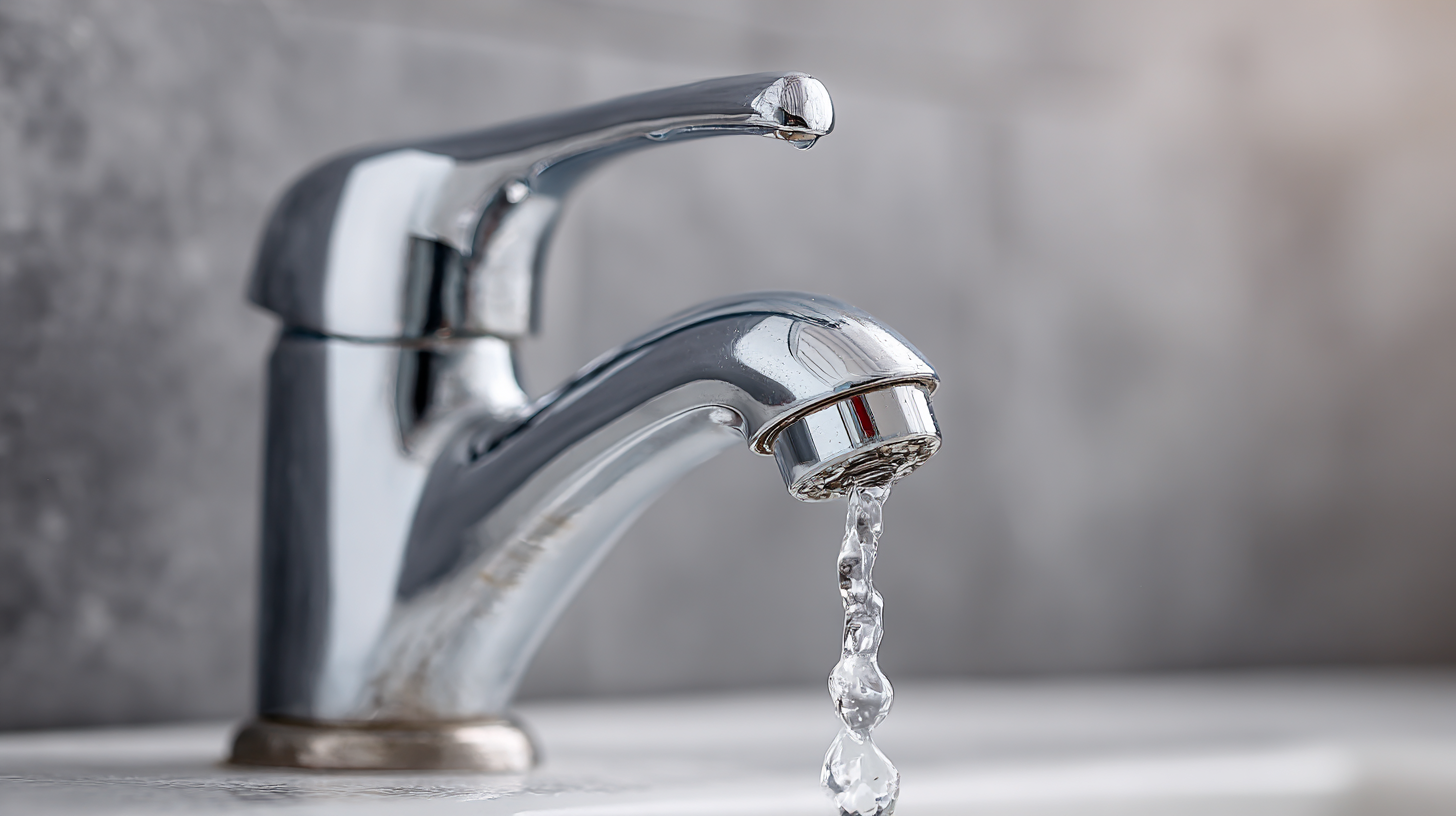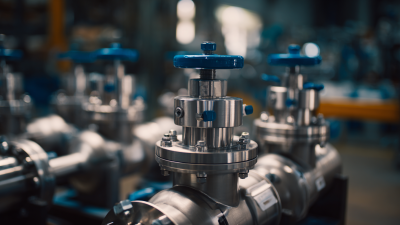The Ultimate Guide to Choosing Eco-Friendly Water Fittings for Sustainable Living
In a world increasingly focused on sustainability, the choice of water fittings plays a pivotal role in reducing our ecological footprint. According to the Global Water Intelligence report, around 70% of all freshwater resources are used in the agriculture sector, highlighting the need for efficient systems in other areas, including residential water use. Eco-friendly water fittings can significantly contribute to water conservation, as they are designed to minimize waste while maintaining performance. The Water Research Foundation notes that households can achieve a reduction of up to 30% in water usage by opting for high-efficiency fixtures. As consumers become more aware of their environmental impact, the demand for sustainable water fittings continues to rise, prompting manufacturers to innovate and meet these eco-conscious needs. This guide aims to provide valuable insights and practical tips for selecting water fittings that align with sustainable living principles, ensuring both functionality and ecological responsibility.

Understanding the Environmental Impact of Traditional Water Fittings: Key Statistics and Facts
 Traditional water fittings significantly impact the environment, primarily due to their material sources and manufacturing processes. For instance, it’s estimated that the production of standard faucets and showerheads consumes millions of gallons of water and emits tons of greenhouse gases. Furthermore, many conventional fittings are made from non-recyclable materials, contributing to landfill waste and microplastic pollution in water sources.
Traditional water fittings significantly impact the environment, primarily due to their material sources and manufacturing processes. For instance, it’s estimated that the production of standard faucets and showerheads consumes millions of gallons of water and emits tons of greenhouse gases. Furthermore, many conventional fittings are made from non-recyclable materials, contributing to landfill waste and microplastic pollution in water sources.
To reduce this impact, consider opting for eco-friendly alternatives. Tips for choosing sustainable water fittings include looking for fixtures that are certified for water efficiency, such as those with the WaterSense label. These products can save homeowners up to 30% on water usage without sacrificing performance. Additionally, researching materials is crucial; select fittings made from recycled or sustainably sourced materials that minimize environmental harm during their life cycle.
Be mindful of maintenance as well; well-maintained water fittings can last longer, reducing the need for replacements. Regularly checking for leaks and replacing old washers can enhance the life of your fixtures, fostering a commitment to sustainability while conserving water resources effectively.
Evaluating Water Conservation Benefits: How Eco-Friendly Fixtures Reduce Water Usage by Up to 30%
When considering sustainable living, the impact of water usage cannot be overlooked. Eco-friendly water fittings offer a significant opportunity to reduce water consumption, with many fixtures designed to cut usage by up to 30%. These modern innovations include low-flow faucets, dual-flush toilets, and water-efficient showerheads that maintain performance while conserving resources. By integrating these fixtures into homes, individuals can dramatically lower their water bills and their environmental footprint.

The benefits of eco-friendly fixtures extend beyond simple conservation. They contribute to a healthier ecosystem by reducing the strain on local water supplies. Many areas face challenges related to drought and water scarcity, making it crucial to adopt solutions that diminish demand. Additionally, these water-saving devices often incorporate advanced technology, ensuring that users do not compromise on comfort or functionality. In this way, choosing eco-friendly water fittings is a tangible step towards achieving a more sustainable lifestyle while promoting responsible usage of our planet's precious resources.
Comparing Materials: The Sustainability of Recycled Metals vs. Plastic in Water Fittings
When selecting eco-friendly water fittings, the choice of materials plays a crucial role in promoting sustainability.
Recycled metals, such as brass and stainless steel, offer significant advantages over plastic. Not only do they have a longer lifespan, reducing the frequency of replacements, but their recyclability also contributes to a circular economy. By repurposing existing metals, manufacturers are able to decrease the environmental impact associated with mining and processing new materials. This makes recycled metals a more sustainable option, particularly for water fittings that require durability and longevity.
On the other hand, while plastics can be lightweight and cost-effective, they pose a considerable environmental challenge. The production of plastic fittings often involves fossil fuels, contributing to greenhouse gas emissions and pollution. Additionally, plastic materials can take centuries to decompose, leading to long-term waste issues. Although some biodegradable options exist, they may not provide the same level of performance and reliability as their metal counterparts. Therefore, when considering sustainability in water fittings, recycled metals emerge as a superior choice, aligning better with eco-friendly principles and supporting a healthier planet.
Assessing Certification Labels: How Choosing Eco-Friendly Products Can Lead to LEED Points in Sustainable Projects
When undertaking sustainable projects, the role of certification labels in choosing eco-friendly water fittings cannot be overstated. These labels not only indicate a product's environmental impact but also help project teams accrue valuable LEED (Leadership in Energy and Environmental Design) points. According to the U.S. Green Building Council, products that are certified as water-efficient can earn up to three points under the LEED v4 rating system. This underscores the importance of selecting fixtures that reduce water use without sacrificing performance.
In addition to water efficiency, many eco-friendly fittings are made from recyclable materials or are designed to minimize waste during installation and usage. A report by the Environmental Protection Agency highlights that adopting water-efficient fittings in commercial and residential buildings can save approximately 3 trillion gallons of water annually. This substantial reduction not only lowers utility bills for consumers but also positively affects the environment by conserving precious water resources. By making informed choices based on certification labels, builders and homeowners alike can significantly contribute to sustainable practices while also enhancing their project's credibility in the green building landscape.
The Ultimate Guide to Choosing Eco-Friendly Water Fittings for Sustainable Living
| Product Type | Water Flow Rate (GPM) | Certification Label | Potential LEED Points | Material Used |
|---|---|---|---|---|
| Low-Flow Showerhead | 2.0 | WaterSense | 1 | Recycled Plastic |
| Dual-Flush Toilet | 1.28/0.8 | LEED compliant | 2 | Ceramic |
| Aerated Faucet | 1.5 | NSF | 1 | Brass |
| Rainwater Harvesting System | Variable | Green Building Council | 3 | Polyethylene |
| Smart Irrigation Controller | N/A | EPA WaterSense | 1 | Recyclable Materials |
Long-Term Cost Savings: Analyzing the Economic Benefits of Investing in Eco-Friendly Water Fittings
Investing in eco-friendly water fittings is not just a matter of environmental consciousness; it can also lead to significant long-term cost savings. By choosing water-saving faucets, showerheads, and toilets, homeowners can drastically reduce their water consumption. This not only lowers utility bills but can also reduce the wear and tear on plumbing systems, leading to fewer repairs and replacements over time. The initial investment in sustainable fittings often pays for itself within a few years, making it a smart financial move.
Tips for selecting eco-friendly water fittings include looking for products with the WaterSense label, which signifies that they meet strict efficiency and performance criteria. Additionally, consider opting for fittings that incorporate smart technology to monitor and manage water use, helping to conserve resources even further. Finally, always review product durability and warranty coverage to ensure that your investment lasts well into the future.
By understanding the economic benefits of eco-friendly water fittings, homeowners can make informed choices that contribute to both sustainability and financial health. These choices support a greener planet and provide long-lasting savings, making them a win-win situation for both the environment and your wallet.
Related Posts
-

7 Essential Tips for Choosing the Right Sanitary Fittings for Your Project
-

How to Choose the Right Sanitary Fittings for Your Plumbing Needs
-

7 Essential Features to Look for in Sanitary Fittings
-

How to Choose the Right Diaphragm Valves for Your Industrial Applications
-

Top Strategies for Enhancing Performance with Fittings Valves
-

7 Best Sanitary Valves to Enhance Your Industrial Efficiency and Compliance